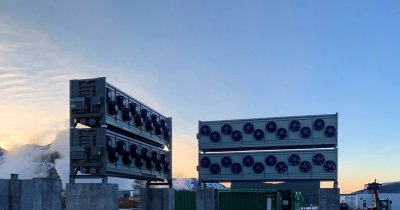According to CNET, recently, a research team from Michigan State University have presented a way to make wind turbine blades recyclable, so that they don't reach landfills once they can't harness wind power properly.
They developed a new type of blades, made of fiber glass and a number of plant-based and synthetic polymers and the mixture is called composite resin.
This new material should be significantly easier to recycle into various things, including gummy bears.
John Dorgan, a chemical engineer from MSU, said that "the beauty of our resin system is that at the end of its use cycle, we can dissolve it, and that releases it from whatever matrix it's in so that it can be used over and over again in an infinite loop."
The new composite material is great for recycling sine its component materials can be separated from one another, so fiber glass, which is harder to process, can be removed entirely, leaving just the polymers to be modeled into various things.
By resting the resin in a bath of alkaline solution, the team of researchers got an acrylic material that can be used for making windows and car tail lights.
"We've recently made a bathroom sink with the cultured stone, so we know it works", Dorgan added.
Once extracted, the polymers can also be turned into different types of food.
"We recovered food-grade potassium lactate and used it to make gummy bear candies, which I ate", he followed.
The scientist ensures people that treats made from the resin are safe to eat, as "a carbon atom derived from a plant, like corn or grass, is no different from a carbon atom that came from a fossil fuel ... it's all part of the global carbon cycle, and we've shown that we can go from biomass in the field to durable plastic materials and back to foodstuffs."
The industry needs to find a way to mass produce the substance that goes into manufacturing these sustainable blades, as the team only produced a prototype with whatever material they had available.
 Mihai - Cristian Ioniță
Mihai - Cristian Ioniță












Any thoughts?